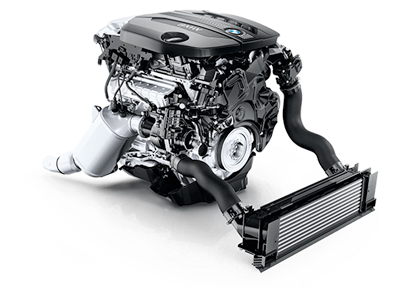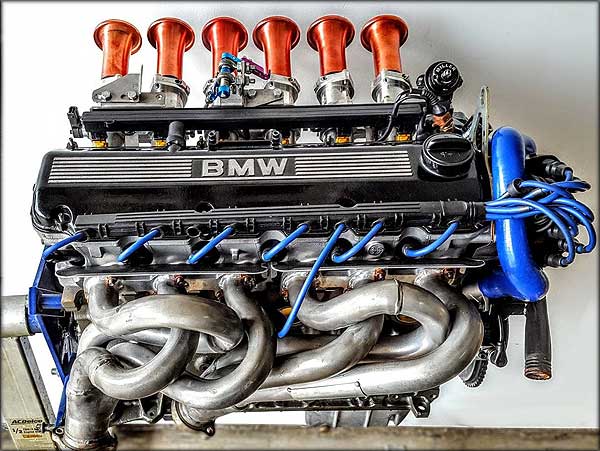A Beginner's Overview to Choosing the Right BMW Engine for Your Requirements
A Beginner's Overview to Choosing the Right BMW Engine for Your Requirements
Blog Article
Exploring the Advancement of Combustion Engines in Modern Transportation Equipments
As we browse the landscape of modern-day transport, the evolution of combustion engines stands as a testimony to human resourcefulness and design prowess. From their modest starts to the innovative powerhouses pushing lorries today, combustion engines have actually undergone an amazing journey of technology and adaptation. Comprehending the intricacies of this development not only sheds light on the past but also leads the way for imagining what lies ahead in the realm of transport modern technology. The interaction of background, innovation, and environmental problems in forming the trajectory of burning engines produces a narrative that is both informative and engaging.
Early Beginnings of Combustion Engines
How did the principle of burning engines initial emerge in the onset of transportation growth? The origins of combustion engines can be traced back to the 17th century when the concepts of inner burning were initial checked out. In 1673, Christian Huygens conceived a basic internal burning engine that utilized gunpowder to create power. However, it had not been until the late 19th century that sensible applications of burning engines in transportation began to emerge.
The breakthrough minute came with the development of the very first successful gasoline-powered engine by Karl Benz in 1885 - bmw engine. This engine led the way for the growth of the contemporary car, transforming transportation systems worldwide. Subsequent technologies by Nikolaus Otto and Gottlieb Daimler better refined combustion engine modern technology, resulting in the automation of automobiles and the fast growth of the transportation sector
These early combustion engines were defined by their simplicity and efficiency, laying the structure for the facility and effective engines made use of in modern transportation systems. The development of combustion engines has actually been critical fit the means we travel and move items, marking a considerable landmark in the background of transport growth.
Transition to Internal Combustion Technology
The shift to inner combustion modern technology noted a pivotal change in the development of transportation systems. This shift started in the late 19th century, with developers like Nikolaus Otto and Gottlieb Daimler establishing the very first successful internal burning engines. These engines revolutionized transportation by supplying a much more effective and reliable alternative to vapor engines and electrical motors.
Among the vital benefits of inner burning engines was their ability to be reduced to fit into vehicles, bring about the growth of motorcycles and autos. This shift from bulky, fixed engines to small, mobile ones led the method for the contemporary transportation systems we see today.
The change to inner combustion technology additionally stimulated developments in gas innovation, bring about the growth of gasoline and diesel as primary fuel sources for automobiles. This shift not only made transport a lot more obtainable to the masses yet also laid the structure for the oil and gas sector to end up being integral to global economies.
Effect of Combustion Engines on Transportation
The fostering of combustion engines in transport systems catalyzed an extensive shift in the efficiency and rate of worldwide wheelchair. Combustion engines reinvented transportation by giving a reliable and functional resource of power for numerous lorries, including cars, ships, vehicles, and airplanes. This development significantly improved the capability for items and people to conform cross countries in shorter timespan, bring about increased connection in between areas and nations.
Additionally, the extensive use burning engines has actually had a substantial effect on financial development. The ability to deliver goods successfully has actually stimulated trade and commerce, permitting companies to increase their markets and reach consumers worldwide. This has helped with you can find out more financial growth and globalization, as products can currently be carried much faster and in bigger amounts than ever previously.
Nevertheless, the environmental impact of combustion engines can not be ignored. The combustion of nonrenewable fuel sources has actually brought about air pollution and greenhouse gas exhausts, contributing to climate modification and positioning health risks to populations. bmw engine. Consequently, there is an expanding focus on developing different propulsion technologies to alleviate these negative effects and produce a much more sustainable future for transport
Advancements in Burning Engine Layout
One significant innovation is the development of turbocharged engines, which utilize exhaust gases to drive a generator that presses inbound air, permitting for even more fuel to be burnt, resulting in boosted power outcome without a significant boost in engine dimension. Variable valve timing systems have also revolutionized engine layout by enhancing airflow at different engine rates, boosting both power and effectiveness. These developments collectively contribute to the continuous enhancement of combustion engines in modern transportation systems.
Future Trends in Burning Engine Growth
With innovation innovations driving continual technology, the future of combustion engine growth is positioned to reinvent transportation systems internationally. One of the vital patterns in combustion engine advancement is the push in the direction of higher efficiency and lowered discharges.
Another noticeable fad is the fostering of crossbreed modern technologies in combustion engines. Hybrid engines incorporate standard combustion technology with electric power, supplying improved fuel performance and lower discharges. As the vehicle industry shifts in the direction of electrification, hybrid burning engines are seen as a transitional remedy that connects the space between traditional vehicles and totally electric ones.
Additionally, the integration of wise innovations, such as expert system and data analytics, is expected to play a considerable duty in the future of combustion engine development. These modern technologies can maximize engine performance in real-time, leading to check much more reliable combustion processes and boosted overall automobile performance. Embracing these future fads will not just drive advancement in burning engine advancement however additionally add to a more ecologically pleasant and lasting transport ecological community.

Final Thought
To conclude, the advancement of burning engines in modern-day transport systems has actually been marked by substantial innovations in modern technology and style. From the early starts of combustion engines to the change to inner burning technology, these engines have actually had an extensive effect on transport. Developments in burning engine design remain to drive development in this area, with future fads focusing on additional improving efficiency and minimizing exhausts. The future of burning engines in transportation looks appealing as r & d initiatives remain to press borders.
The origins of combustion engines can be traced back to the 17th century when the concepts of inner combustion were initial explored. These engines changed transportation by using a much more effective and effective option to steam engines and electric motors.

Report this page